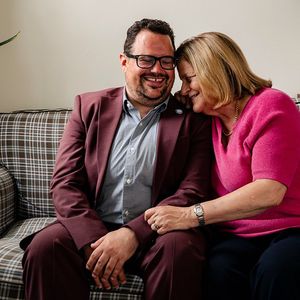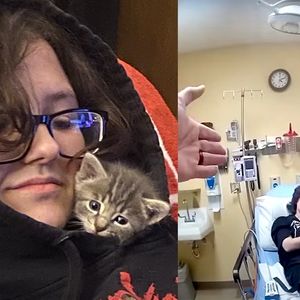New and easy to take fixed drug combinations (FDCs) have made treating and living with HIV substantially more convenient. With four FDCs already approved by the Federal Drug Administration — Complera, Atripla, Stribild and Triumeg — and several more in the pipeline, for many, choosing an HIV regimen is becoming much simpler. However, a significant number of people living with HIV are unable to utilize many of these drugs due to drug resistance, including transmitted and cross-resistance. These individuals are in desperate need of salvage therapy options.
Apricitabine (ATC) is a phase III NRTI for drug resistant treatment-experienced patients, which would help allow for the construction of salvage therapy regimens for those with few or no treatment options. Unfortunately, ATC has lingered in Phase III for several years and community support is needed to help assure the commencement of the final clinical trial (registration study) needed for FDA approval.
ATC is the nearest NRTI in clinical development to FDA approval for treatment-experienced drug resistant patients. In May of 2010 the makers of ATC, Avexa, announced that they would no longer be developing ATC for the treatment of HIV. At the time, ATC was in the middle of a Phase II trial for people who were experiencing drug failure. The reason given for discontinuing the trial and drug development was that Avexa was unable to secure a pharmaceutical sponsor to assist with the costs necessary to complete the remaining trials and seek FDA approval. Doctors, patients and their friends and family demanded that the company continue the development of this vital drug.
In March of 2011 after meeting with the FDA, Avexa agreed to resume the development of ATC. The FDA approved the final ATC clinical trial required in the approval process, called a registration study. The registration trial is to be conducted with 300 patients and favourable results would allow for the application for FDA approval of ATC to be used for people who are otherwise unable to construct a complete HIV antiretroviral regimen.
ATC has been shown in previous clinical trials to be safe and effective. ATC is chemically very similar to lamivudine (found in Epivir, Combivir and Trizivir) and emtricitabine (found in Emtriva, Truvada and Atripla). It was designed to work against HIV that has become resistant to lamivudine and emtricitabine. In a 96-week phase III clinical trial, 87% of participants maintained undetectable HIV levels through the course of the trial. Participants also experienced CD4 increases while on ATC. There were no drug-related serious adverse events and no withdrawals from the trial due to side effects. No signature mutations were observed after two years on treatment.
With the recent approval and initiation of studies of fixed doses combination regimens, FDCs have been the focus of research, attention, and advocacy. This is evident by the lack of new data on NRTIs (the backbone of the most effective HIV regimens) at the XX International AIDS Conference that took place in July in Melbourne, Australia. Most FDCs are for treatment-naive patients or include drugs that some treatment-experienced patients are already resistant to, leaving those who are in need of new drug options out in the cold.
This forgotten group of people with HIV are in dire need of advocacy to secure viable drug treatment options.
Due to the improved ability of newer first line regimens to suppress HIV, rates of drug resistance appear to be decreasing. However, as we now have more HIV-positive people living longer and with longer, increasingly complex treatment histories, as well as the rise of transmitted drug resistance, an increasing number of people are running out of options to construct a viable drug regimen capable of suppressing their virus.
There is scarce data available on drug resistance, but some studies estimate that approximately 10 to 17 percent of those with unsuppressed viruses in the U.S., Europe and Japan are resistant to at least some of the available medications. Resistance to NRTIs, the first class of HIV drugs and backbone of effective HAART regimens, is the highest of all existing classes of the antiretrovirals. Drug resistance can occur despite excellent adherence. Limited data shows that 17 percent of treatment-naive patients have transmitted resistance to at least one antiretroviral agent.
Data presented at CROI 2013 by the CDC reported that transmitted HIV drug resistance is on the rise in the U.S., with resistance to NRTIs more common among those with recent infection and the second highest class of mutations behind NNRTIs. At the 14th European AIDS Conference that took place in October 2013, it was reported that the number of people in Europe infected with drug resistant strains of HIV has increased by 35 percent since 2003, despite the total prevalence of drug resistance remaining stable, and the number of people diagnosed with HIV continues to rise in all European countries.
Recent findings show that only one-quarter of HIV patients in the U.S. are able to achieve durable viral suppression. As both Atripla and Stribild use Truvada, the most popular NRTI, as their NRTI backbone, patients who are resistant to Truvada and Atripla will also be resistant to Stribild. ATC is a new and improved NRTI that works against viruses with the M184V mutation, the most common mutation linked to NRTI resistance, and other thymine-associated mutations (TAMs).
Also in need of new treatment options are HIV patients who are unable to tolerate many of the approved and currently utilized NRTIs due to toxicities and/or side effects. Currently available NRTIs are associated with metabolic complications and mitochondrial toxicities.
In June of 2010, the AIDS Treatment Activist Coalition (ATAC) and European AIDS Trials Group (EATG) sent an open letter to Susan Cox, PhD, Chief Scientific Officer of Avexa, Nathan Droma, Chair of Avexa and Stephen Kerr, the Company’s Board Secretary that was published on TheBody.com requesting that Avexa reconsider their decision to stop the development of ATC due to the critical need for this drug.
An ATC Community Support Petition Letter has been initiated to address Members of the Congressional HIV/AIDS Caucus, the Congressional Biotechnology Caucus and the GOP Doctor’s Caucus to gather support for a "Dear Colleague" petition letter, requesting that the NIH conduct the registration study of ATC in one of the federally sponsored HIV clinical trial networks for HIV patients in need of salvage therapy. (Click on this link to sign the ATC Community Support Letter.)
A ViroStream segment profiling ATC and the need for new NRTIs was produced at AIDS 2014. The segment features Mark Wainberg, MD, Director, McGill University AIDS Center, Rob Murphy, MD, Director, Center for Global Health and member of the ACTG Executive Committee and Pedro Cahn, Chief, Infectious Disease Unit, Juan A. Fernandez Hospital and past President of the IAS. Leading clinicians are expressing definitive need for more nukes to treat drug resistant treatment and the publicly sponsored HIV research networks are lagging behind, their emphasis on the agendas that revolutionized the field of HIV and infectious disease, but with the job still unfinished, with millions of patients still untreated and growing numbers becoming untreatable, our starry eyed visions of the “cure” agenda remain unfulfilled.
The many recent failures of what were touted as “cured” HIV patients have left the field with a more realistic idea of where we are in the search for a cure. The resurgance of HIV in the Mississippi baby, the Italian baby and the Boston patients have brought us back to earth and developed consensus that we should not be so quick to report individual cases of suspected cured patients. There needs to be a renewed focus on the development of promising new approaches to treating HIV, such as the clinical development of BIT-225, a Vpu inhibitor in development by Biotron, VM-1500, an NNRTI for drug resistant treatment-experienced patients in development by Viriom and ATC. With the majority of people living with HIV not receiving treatment and with no hope of ever receiving antiretroviral therapy and the continued increase in patients who are untreatable, we need to finish the job before we expend so much resources and time in search of a cure. Noticeably absent from this fight are world-renowned leaders including Steve Deeks and Francoise Barre-Sinoussi.
Additional information on ATC is available in articles published in POZ, TheBody.com, AIDSmeds.com and A&U magazine over the past few years. However, the majority of AIDS treatment activists have not been petitioning to move ATC forward despite how close it is to the goal line and the urgent unmet need it addresses.
If the registration trial of ATC is successful, it could provide a significant amount of people living with HIV the ability to construct a salvage therapy regimen that successfully suppresses viral replication, reducing disease progression. As the makers of ATC are unable to continue development of this urgently needed new ARV due to lack of funding, publicly sponsored HIV clinical trial networks should step up to conduct the final clinical trial of ATC required by the FDA.
As neither the pharmaceutical industry nor the NIH have made salvage therapy options for those in desperate need of new medications a priority for funding, the HIV community must step in to ensure that treatments such as ATC and other ARVs for treatment-experienced and salvage therapy patients are given the urgently needed opportunity to complete clinical development and made available if they prove to be effective with improved toxicity profiles.

















































































